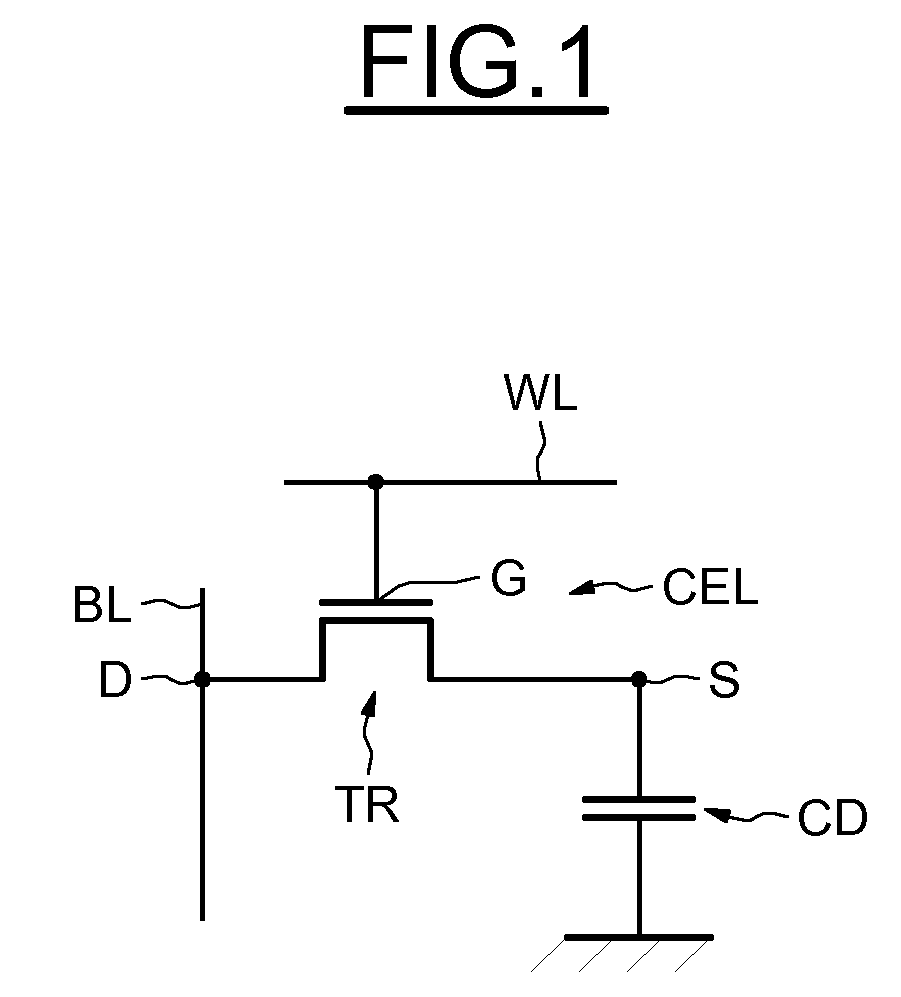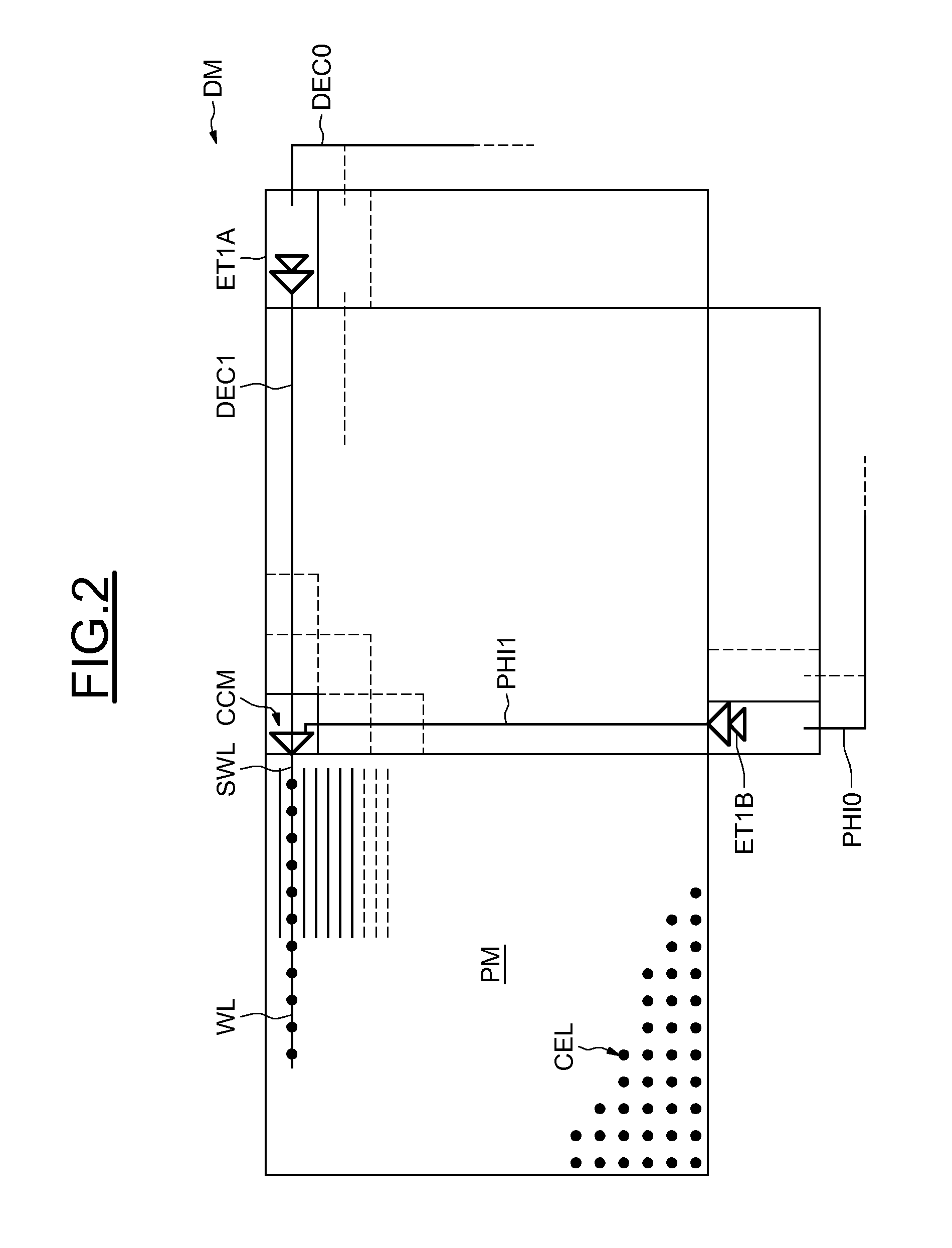Dynamic random access memory device with improved control circuitry for the word lines
a memory device and dynamic random access technology, applied in the direction of digital storage, electrical equipment, instruments, etc., can solve the problem of nmos transistors oxidizing after two days and a few hours, and achieve the effect of reducing the risk of oxide breakdown and high working frequency
- Summary
- Abstract
- Description
- Claims
- Application Information
AI Technical Summary
Benefits of technology
Problems solved by technology
Method used
Image
Examples
Embodiment Construction
[0018]In FIG. 1, the reference CEL designates a DRAM memory cell comprising, in a conventional manner, an access transistor TR whose gate G is linked to a word line WL, whose drain D is connected to a bit line BL and whose source S is connected to a storage capacitor CD. Access transistors TR having threshold voltages VT sufficiently high to reduce charge leakage are preferably chosen. Thus for example, dual-oxide transistors, well known to the person skilled in the art, having threshold voltages of the order of 1 volt may be needed.
[0019]Moreover, in the case where the nominal supply voltage of the bit line is of the order of 1 volt, this being the case in 32-nanometer technologies, it is generally desirable to apply a voltage of the order of 2.5 volts to the gate of the transistor TR to have a gate-source voltage much greater than the threshold voltage, and thus have a relatively short write time. Thus, it may ultimately be possible to obtain a high working frequency for the memor...
PUM
 Login to View More
Login to View More Abstract
Description
Claims
Application Information
 Login to View More
Login to View More - R&D
- Intellectual Property
- Life Sciences
- Materials
- Tech Scout
- Unparalleled Data Quality
- Higher Quality Content
- 60% Fewer Hallucinations
Browse by: Latest US Patents, China's latest patents, Technical Efficacy Thesaurus, Application Domain, Technology Topic, Popular Technical Reports.
© 2025 PatSnap. All rights reserved.Legal|Privacy policy|Modern Slavery Act Transparency Statement|Sitemap|About US| Contact US: help@patsnap.com



